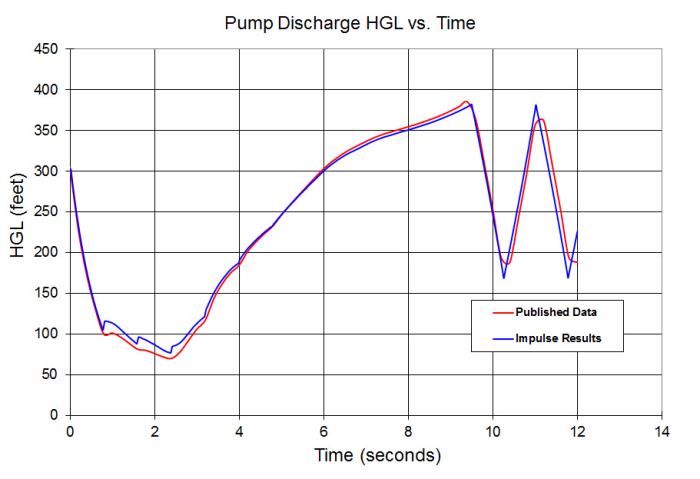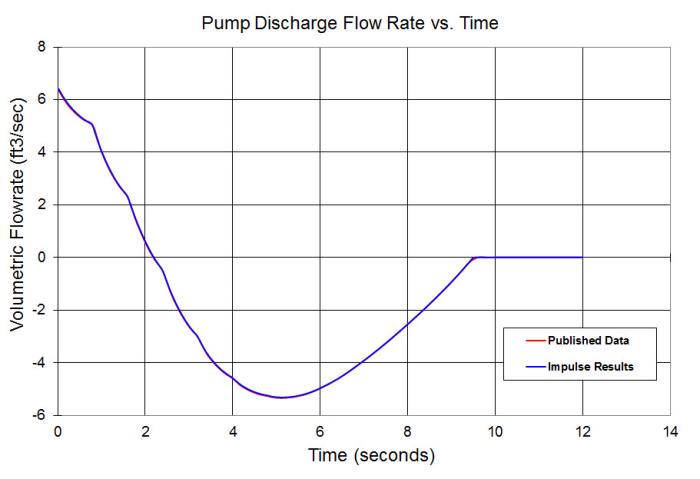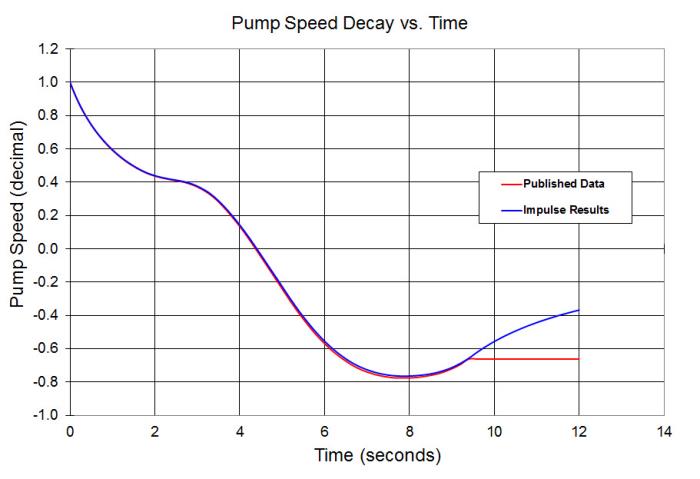Verification Case 14
PRODUCT: AFT Impulse 9
TITLE: ImpVerify14.imp
REFERENCE: Fluid Transients in Systems, 1993, Prentice-Hall, E. Benjamin Wylie, Victor L. Streeter, Page 153, Ex. 7-1
FLUID: Water
ASSUMPTIONS: Wylie’s method includes a combined discharge valve and pump four quadrant element. AFT Impulse does not support this combined element – the pump and valve must be modeled as separate elements. Thus the AFT Impulse model places the valve at the equivalent of one computing station downstream of the pump which is 72 feet. The total pipe length between pipes 1 and 2 is 1440 feet, the same as Wylie.
Because of this, the appropriate location to compare transient head and flow is the inlet of pipe 2, which represents the valve discharge. This data is shown below.
RESULTS:



DISCUSSION:
The results in Wylie are based on a computer program in Appendix D which assumes that once the flow goes to zero at the pump discharge (this occurs when the valve closes at about 9.5 seconds) then the pump speed stays constant at whatever value it has at that time. This is not a completely valid assumption, and AFT Impulse does not assume this. Thus the pump speeds do not agree as well after this time. The HGL prediction is not impacted because it is downstream of the valve which, once closed, the pump speed can no longer impact.



